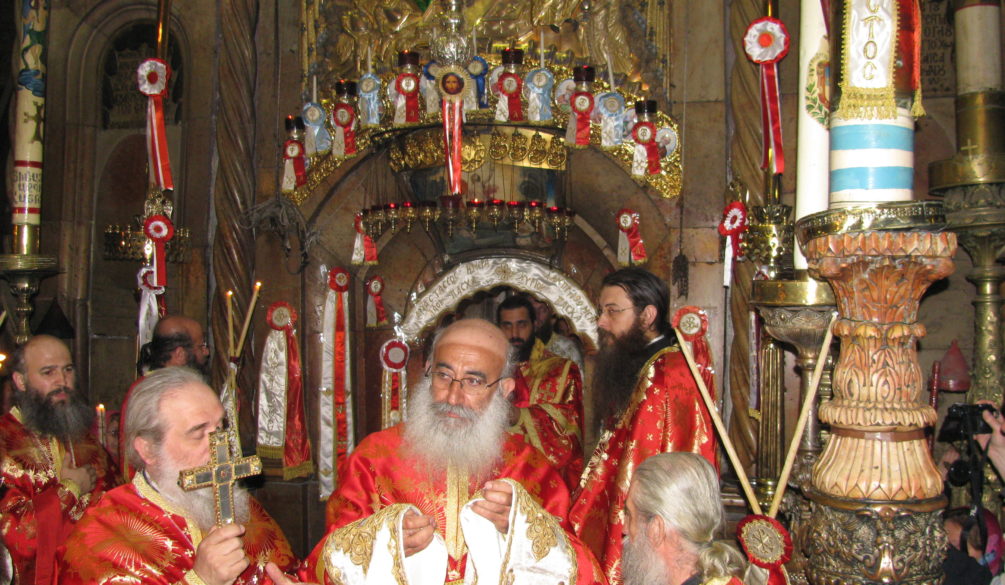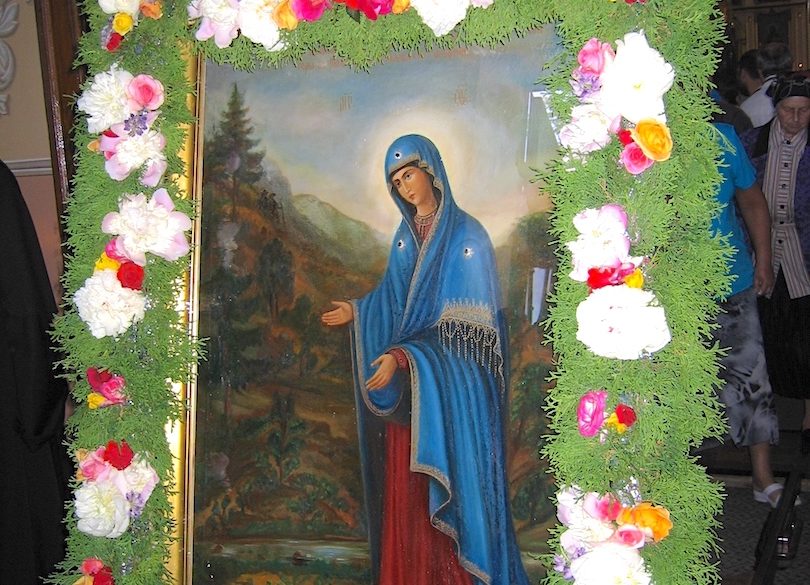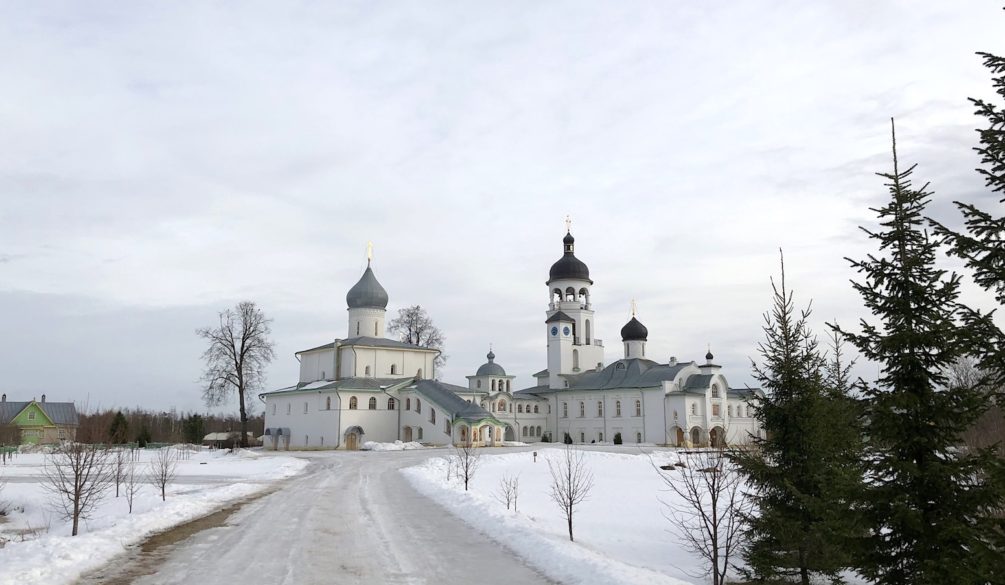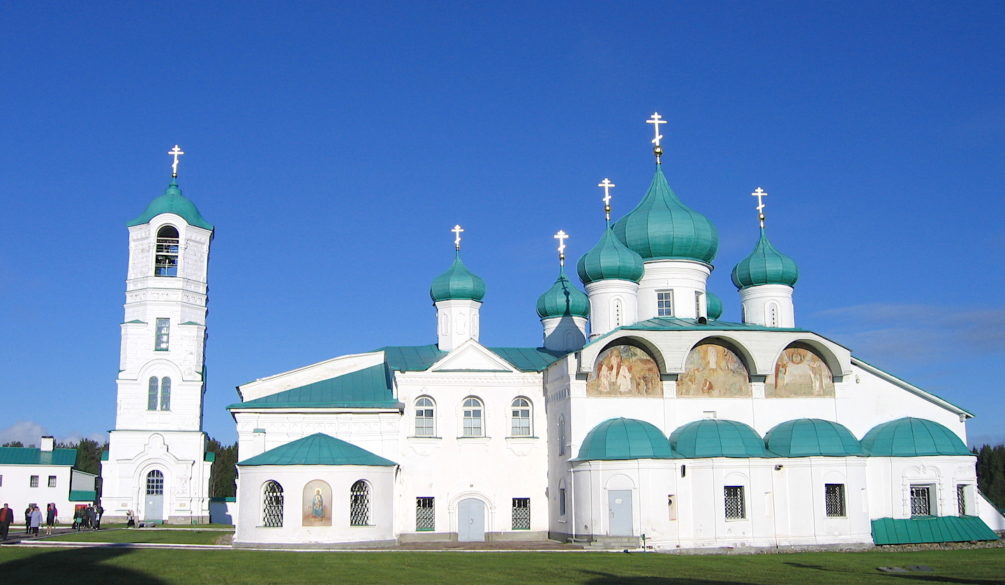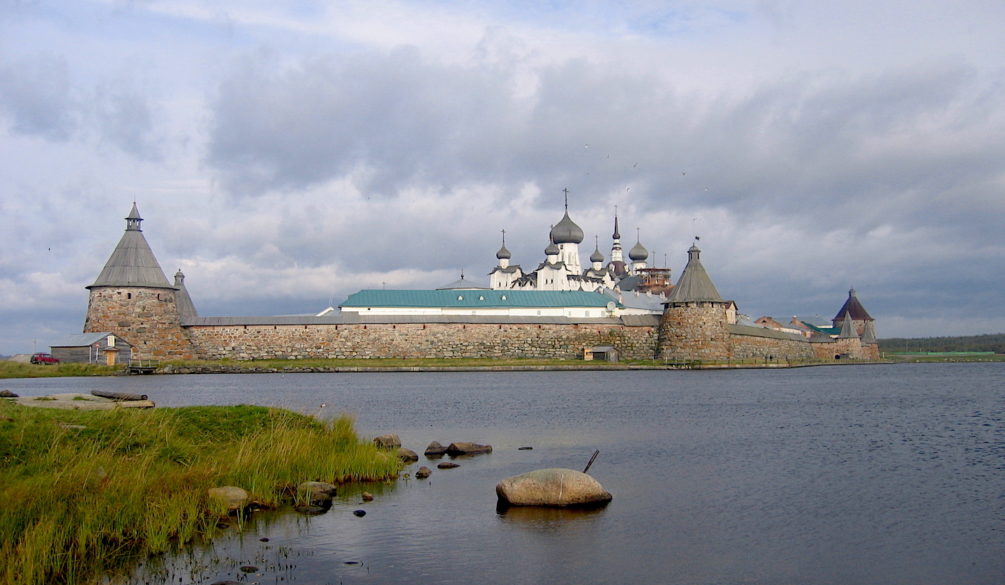2021
Holy Land-Prague Easter April 2009
There is in the East, under the blue vault of heaven, a small corner of the earth, destined from time immemorial by the Creator Himself to be the focus of the aspirations of all peoples and tribes who seek the true God and His providence on earth. As the heart is in man, so for thousands of years this promised land has poured out of itself, as from a spring of pure and inexhaustible, the power of spiritual life and unearthly truths that point man to the ideal to which he must tirelessly strive in order to achieve perfection. In the views of Christian peoples, this promised country has always seemed to be the pinnacle of the world, crowned with a Life-giving Cross, on which a terrible sacrifice was made about the human race, “wrote Fyodor Konstantinovich Grekov (Paleologist), an employee of the magazine” Russian Pilgrim ” at the end of the XIX century.
This country was called and is still called in different ways: The Promised Land, the Land of Canaan, Israel, Palestine, the Holy Land… This small corner of the earth is especially highlighted by God’s providence. Most of the events described in the Bible took place here. A righteous man once came to the Promised Land Abraham, laying the foundation for the God-chosen people and their faith in the One God. Here the prophet Moses led the people of God from the Egyptian captivity. Kings David and Solomon ruled here, and the prophets proclaimed the will of God to the people and spoke of the coming of the Savior into the world. Here passed the earthly life of our Lord Jesus Christ – from Nativity to Ascension.
In the Holy Land, to this day, everything preaches the gospel of Christ, and therefore it is sometimes called the fifth Gospel.
2021
Estonia July 1, 2009 Pyuchtitsky Holy Dormition Monastery
Pühtitsa (Est. – Sacred place) is a village in Vesenberg county, Estland province, on the border of Pskov and S.-Petersburg provinces. Petersburg guberniya, 16 versts to the northwest from Lake Peipsi; part of the village is inhabited by Russian peasants, part of the so-called “Poluvertsy” i.e., Oluteran Russians, who migrated here from across the Lake Peipsi for fishing in the 15th century. There is a church and a nunnery near Pyukhtitsa, on the Bogoroditskaya Mountain, founded in 1892. The latter has a health center, an asylum (30 girls), a school and workshops for icon painters, gold embroiderers, and swordsmen. F.A.Brockhaus and I.A.Efron Encyclopaedic Dictionary, S.-Petersburg, 1890-1907.
The mountain of Bogoroditsky, on the top of which the Pyukhtitsa Holy Dormition Monastery is located, has had the name of Kuremäe (Crane Mountain) from ancient times. Back in XII-XIII centuries a trade route ran through these places, connecting Novgorod and Pskov lands with ancient Estonian cities Yuriev (Tartu) and Kolyvan (Tallinn). In those distant times the first Russian settlements appeared in the area. Since XIII century with the expansion of Crusaders Catholicization of the region began. Still, a part of the population remained faithful to Orthodoxy and sought support in it. When Lutheranism was introduced in Estonia (in the first half of the 16th century), it brought hard times for non-Christians. Orthodox churches and chapels were destroyed. Worship services were held in German, not understandable to the Estonians. In the 15th century, there were martyrs for the Orthodox faith. In ancient Yur’ev in 1472 Presbyter Isidor of St. Nicholas Church and 72 parishioners were seized on the river Omovzha during the Epiphany water blessing, imprisoned and two days later thrown under the ice in the same Jordan, where they went out to celebrate the Epiphany. And so, in this place, as a consolation to the people of Estonia, exhausted in their impossible struggle against the Teutonic Knights, the Mother of God appeared.
According to the sixteenth-century Sirenets Chronicle, there was a sign in Kuremäe more than four centuries ago. Early on a summer morning, shepherds saw the Blessed Virgin Mary in a marvelous azure robe on the mountain. They rushed up the mountain – the vision disappeared. As they moved away, she reappeared in front of them. When the shepherds returned home, they told the people of their village. The next day, at dawn, the villagers went to the mountain, and they too saw the Blessed Virgin Mary, standing in the glow of wondrous light… On the third day, the peasants from all the surrounding villages gathered around the mountain. And again the Blessed Virgin honored them with her apparition. She stood at the foot of the mountain, where there was a spring of spring water. Then the Blessed Virgin began to ascend higher and higher, and stopped at a majestic oak tree and disappeared from their sight. At the place where the Blessed Virgin Mary stood, the villagers found an icon of the Dormition of the Mother of God in a crevice in the oak. The Estonian peasants, being Lutherans, handed the icon over to the Orthodox, who built a chapel dedicated to the Dormition of the Mother of God at the site of the apparition at the ancient oak tree and placed the icon there. Since then, the Crane Mountain began to be called Pyukhtitsa, i.e. the Holy Mountain.
Nowadays the icon, covered in a silver gilded riza decorated with precious stones, stands at the right pylon of the central aisle of the Assumption cathedral. The source, from the shore of which the shepherd watched the sign, is considered holy. It does not freeze up in cold winters. Bathing in it has helped many to get rid of severe ailments. The old oak tree under which the image of the Dormition of the Mother of God was found is still preserved. Scientists believe that it is at least 1000 years old. Its height is 26.5 meters, the girth of the trunk is over 4 meters. It is also revered as a holy, and everyone who came here tried to chip off at least a piece of its bark. Today, a fence was built around the ancient giant. And next to it there is a reconstructed chapel of the 16th century, inside which there is an old chapel.
2021
Russia Krypetsky Monastery February 27, 2019
Krypetsky St. John the Theologian Monastery, located in the middle of the woods, is one of the most beautiful active monasteries in Pskov.
The monastery was founded in 1485 by the Monk Savva Krypetsky in the middle of the Pskov swampy swamps, in an impassable place where only bears and other wild animals lived, near a lake rich in fish. Having built a hut on a stone, Sava lived in fasting and prayer for many years. Soon his disciples began to flock to his residence, attracted by the rumor of his holy life.
In 1487, a monastery was officially founded at the Pskov Veche. Prince Yaroslav Vasilyevich Striga-Obolensky of Pskov took an active part in the construction of the monastery. It is known that with his participation, a bridge was built on the road to the Holy Gate of the monastery.
Not wanting to be in charge himself, the blessed elder put an abbot named Cassiana at the head of his monastery. In the cell of Sava himself there was nothing but the icon of the Savior and the Mother of God His mother, the old matting on which he used to lie down for a short rest. The Monk died Sava was born on August 28, 1495, and was buried in the wooden church of St. Nicholas built by him. St. John the Theologian. The present stone cathedral was built in 1557.
In 1581, the monastery was attacked by the Polish troops of Stefan Batory. Russian Russian peasant, who had deceived the Poles by assuring them that there was no one in the monastery, failed in the siege: the Poles were routed by a Russian detachment hiding in the walls of the monastery.
In the XVI century, in the Krypetsk monastery, the Monks Nil Stolobensky and Nikander the Hermit began their exploits and took monastic vows in it. In 1672
here he also accepts monastic life with the name Anthony Athanasius Lavrentyevich Ordyn-Nashchokin, head of the Embassy Order under Tsar Alexei Mikhailovich.
In the second half of the XIX century, the blessed monk Cornelius lived and asceticized in the Krypetsk monastery. In July 1997, the remains of the blessed monk Cornelius were found, and until January 2000, they were in the monastery church. In September 1999, the monk Cornelius was glorified as a locally venerated saint Pskov Diocese.
By the beginning of the XX century, the Krypetsky Monastery was one of the richest in Russia. It consisted of 40 monks, 21 novices, and the monastery land included 3,602 tithes of land.
Now on the territory of the Krypetsky monastery, restoration work has been carried out, some dilapidated buildings have been dismantled, and new ones are being built. The monastery takes on a beautiful, majestic appearance. The monastery is
now home to about 70 monks and novices. Pilgrims come to venerate the relics of the Venerable Sava and Cornelius Krypetsky, as well as to drink healing water from the holy spring.
About the miraculous water of the Holy Lake in the Krypetsk monastery: The lake, called the Holy One, also has the ancient name Kopanets, showing its man-made character. The water in the Holy Lake of the monastery has been famous for its wonderful properties for centuries. More Reverend Cornelius Krypetsky healed the suffering with water from the Holy Lake. Now on the Holy Lake in the monastery there is a chapel of St. Sava Krypetsky with a baptismal font and a bath for dipping. The water in the lake is warm and soft, but after dipping, the cleansing power of the Holy Lake water is felt.
2021
Russia Holy Trinity Alexander Svirsky Monastery June 5-9, 2009
The Holy Trinity Alexander Svirsky Monastery is 260 km from Saint Petersburg and 21 km from the district center of Lodeynoye Pole. The monastery founded by St. Alexander Svirsky at the end of the XV century
in the remote Olonets region, in the virgin dense forests, among the pagan indigenous population of the Korel, Veps, and Chudis, he quickly became famous. The strengthening of the Orthodox faith in this region was made possible thanks to the strict, pious ascetic lifestyle of the founder of the monastery. People began to flock here, both monks and those seeking prayerful help. Even during the life of the Monk Alexander Svirsky, the monastery was formed as a union of two settlements: at the fraternal cells — the Trinity complex, at the monastery cemetery-the Transfiguration. Both complexes today represent a single monument of architectural structures of the XVI-XIX centuries.
At the turn of the XVIII-XIX centuries, the monastery was called the “Northern Lavra”. The monastery is located in a picturesque location
on the high shore of Lake Roshchinsky, 6 km away. from the Svir River. Most of the buildings are well preserved, demonstrating the high art of the architects who built them, but all of them are in need of major restoration work today.
The oldest building of the monastery is the stone Church of the Intercession of God Mother, built by St. Alexander himself in 1533. Its construction was carried out
on the donations of Tsar Basil III. The church with a refectory and a belfry is made in the Novgorod style. Stone The Transfiguration Cathedral with the chapel of St. Alexander Svirsky (1644). Stone Cathedral of the Life-giving Church The Church of the Holy Trinity was built in 1791, but before that there was a wooden church built by the founder of the monastery, and the Church of St. Pror was consecrated in 1509. Zechariah and Elizabeth built in 1685 The Church of John of Damascus built in 1718 The Stone chapel of the Saint The Trinity Church is built on the place where, according to legend, the Most Holy Trinity appeared to the Monk Alexander of Svir.
Tsars, grand dukes, Russian emperors, noble boyars and nobles, and merchants made great contributions to the construction of churches and monastic buildings. Information about each of them was entered by the careful hand of the monks in the “Census Books”. Most of the monastery’s archive has been preserved and is housed in the National Public Library, the Library of the Russian Academy of Sciences, and the three historical archives of St. Petersburg.
During the 500-year period of the monastery’s existence, the life of the monastery outwardly did not differ much from the life of other monasteries in Russia: the heyday and fall, the invasion of enemies, fires, looting, the restoration of churches again and strict monastic life, constant prayers and work. In the best of times, the monastery had 8 churches, a rich sacristy, expensively decorated icons, a rich book depository with ancient manuscripts, scrolls and books.
Historians of the XIX century called the monastery the Northern Lavra, it was subordinated to 27 monasteries and the desert of this region. There were years when the monastery after the destruction remained only the main shrine-the relics of St. Alexander Svirsky, and a few monks (the beginning and end of the XIX century).
There was also a very dashing time (1918), when there was no shrine or monks in the monastery. The relics were taken away, the monks dispersed, some of them were shot, including the abbot-Archimandrite Eugene / Trofimov/. Instead, on the territory of the monastery: prisons, barracks, invalid homes, a state farm, a psychiatric hospital, boarded-up temples and black eye sockets of the windows of the former fraternal cells.
The new inhabitants, who settled in the monastery in 1997, had to work hard — they got the monastery ruined. The biggest event in the life of the restored monastery was the discovery of the relics of the founder of the monastery — St. Alexander Svirsky, which took place on July 30, 1998.
With His prayers and help, the ancient monastery is being revived. The churches, part of the buildings and the territory of the Transfiguration and Trinity complexes were put in order, and the liturgical life of the monastery was established.
2019
Russia Spaso-Preobrazhensky Solovetsky Monastery September 2009
Monasteries, according to St. Philaret (Drozdov), were the “spiritual stronghold” of Orthodoxy. Pilgrims went to the holy monasteries not only to worship the shrines,
but also to experience the correct Christian life. The believers were guided by the words of John of the Ladder: “The light of the monks is the Angels, the monks are the light for
all men.”
In ordinary life, in the hustle and bustle of everyday worries, the intensity of spiritual life weakened. Coming to the monasteries, the pilgrims observed a strict monastic life
– for them, it was a true Christian life – and then they tried to imitate it in the world. In the monasteries, the usual prayers and chants sounded in a special way. Each of
them had its own saints. The monastery was a living illustration of the lives familiar to many from childhood. The moral feat of the saints inspired a righteous
life. The life according to the commandments of Christ was also promoted by the advice of experienced elders. People from all walks of Russian society sought them for spiritual conversation in the monastery
. Visiting the monasteries morally cleansed, strengthened in faith and piety.
Sometimes, after returning from a pilgrimage, people changed their entire lives. The religious philosopher and historian Prince Sergei Trubetskoy considered monasteries “a place of spiritual
and moral education of the people”. Having received a charge of faith here, the pilgrims then carried it to the world.
Solovki has always attracted pilgrims seeking the shrine. But many participants of scientific expeditions, foreign
travelers, writers, and industrialists also came to the islands. They found their interest here – business, scientific, educational. Everyone perceived Solovki in their own way, but
all visitors noted that there is a special world here, different from their ordinary worldly life. People sometimes began to think for the first time that
there is another life — high and spiritual. And today Solovki is visited not only by Orthodox pilgrims. The islands are
still open to everyone. Here everyone finds something that is interesting to the mind and dear to the heart. A visit to the Solovetsky Islands always enriches you with new knowledge,
impressions, and joyful experiences. Let it at the same time open the door to the world of the Orthodox monastery for some, and make this world more open for others.
close and understandable, and someone may want to come back here again. Let everyone here feel the joy of coming into contact with the shrine and
keep the bright feelings experienced in their soul as long as possible. Spaso-Preobrazhensky Solovetsky Stavropol monastery.
Viceroy Archimandrite Porfiry







